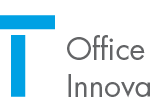muraPOI: January 11, 2012 — Collected Top of 2011 Lists for EdTech
-
Our Top 11 Most Popular Articles for 2011, part 1: From the list, these are the posts that I like.
- Failure is an Option: Helping Students Learn from Mistakes“: “Instead of using failure as a valuable teaching tool, education discourages it as, well, a sign of failure.” Let’s fail more, to learn more.
- Revisiting Extra Credit Policies: This article generated lots of discussion on the site. I find it relevant because I ended up adding a “optional” assignment for our Open Education class. We wanted to generate more discussion and free thinking and this was one of the better ways we could think of to do it. I think in the next iteration of the class, we’ll do this again, and couple it with techniques for assigned reading assignments.
(Faculty Focus, December 12, 2011)
-
Our Top 11 Most Popular Articles for 2011, part 2: Part 2.
- What Students Want: Characteristics of Effective Teachers from the Students’ Perspective: After respect, students want responsive. This one is a challenge for instructors to balance responsiveness and not having to work 24×7. In our case we promised a 48-hour turnaround (which was probably too long, but accounts for weekends and our travel), and oftentimes did much better than that in our course.
- What Does Your Syllabus Say About You and Your Course?: This one got me thinking the most of the articles in the two lists… I am sure that the syllabus for our Open Education course didn’t convey what we really wanted, and I’ll think quite a bit before we teach the course again. We covered the mechanics, not the engagement and liveliness that we wanted to see in the course.
(Faculty Focus, December 14, 2011)
-
Fifteen Random Things I’ve Learned About Design for Participation This Year: Although this article is written by Nina Simon with a focus on museums, I found a few of the ideas applicable to the work I do in educational technology.
- Cut your instructions down to as little text as possible. This is true for any kind of exhibit. If you don’t need them, dump ‘em.
- In contrast, people will read signs that explain how their work will be/was used, or that the giant sculpture of metal fish they are looking at was made by visitors. They will be impressed. They will want to participate. Accolades are more inspiring than instructions.
- Prune for diversity and clarity, not quality. The contributions that are the “best” may be a narrow reflection of your own personal preferences.
- “Make and share” is more powerful for many people than “make and take.” Most people–including kids–want to display their creations, not keep them.
(O’Reilly Radar, Four short links: 3 January 2012)



